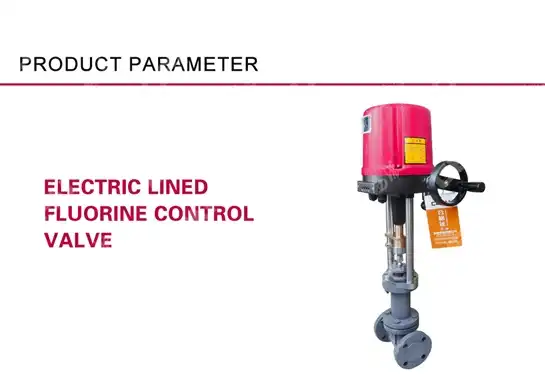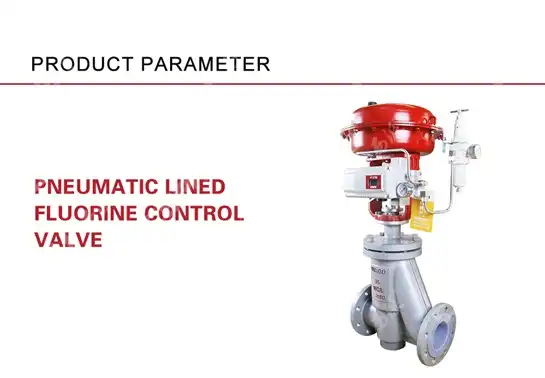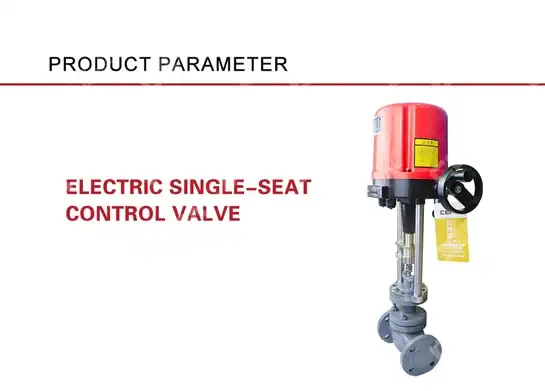The Top 5 Features to Look for in a High-Performance Pneumatic Control Valve
Industrial operations face critical challenges when process disruptions occur due to inadequate valve performance, leading to costly downtime, safety risks, and compromised product quality. Selecting the right Pneumatic Control Valve with optimal features can mean the difference between seamless operations and expensive failures. This comprehensive guide reveals the five essential features that distinguish high-performance pneumatic control valves from standard alternatives, ensuring your investment delivers maximum operational efficiency and reliability across demanding industrial applications.
Understanding High-Performance Pneumatic Control Valve Technology
-
Advanced Actuator Mechanisms for Superior Control
Modern high-performance pneumatic control valves depend on sophisticated actuator systems that deliver precise control across varying operational conditions. The actuator serves as the muscle of the valve system, converting compressed air pressure into mechanical motion that positions the valve stem and controls flow rates with exceptional accuracy. Multi-series Pneumatic Low Temperature Control Valve applications particularly benefit from advanced diaphragm-type actuators featuring ethylene propylene rubber sandwiched with nylon materials, providing enhanced durability and consistent performance even in extreme temperature environments ranging from -30°C to +70°C. Contemporary actuator designs incorporate multiple spring configurations with pressure ranges spanning 20-100KPa, 40-200KPa, and 80-240KPa, allowing operators to customize the valve response characteristics based on specific process requirements. These actuators feature rolling diaphragm technology that ensures linear response throughout the operating stroke while maximizing component lifespan. The integration of fail-safe mechanisms enables gas-open or gas-close operations, providing critical safety redundancy that prevents catastrophic system failures during emergency situations.
-
Precision Flow Control and Rangeability Characteristics
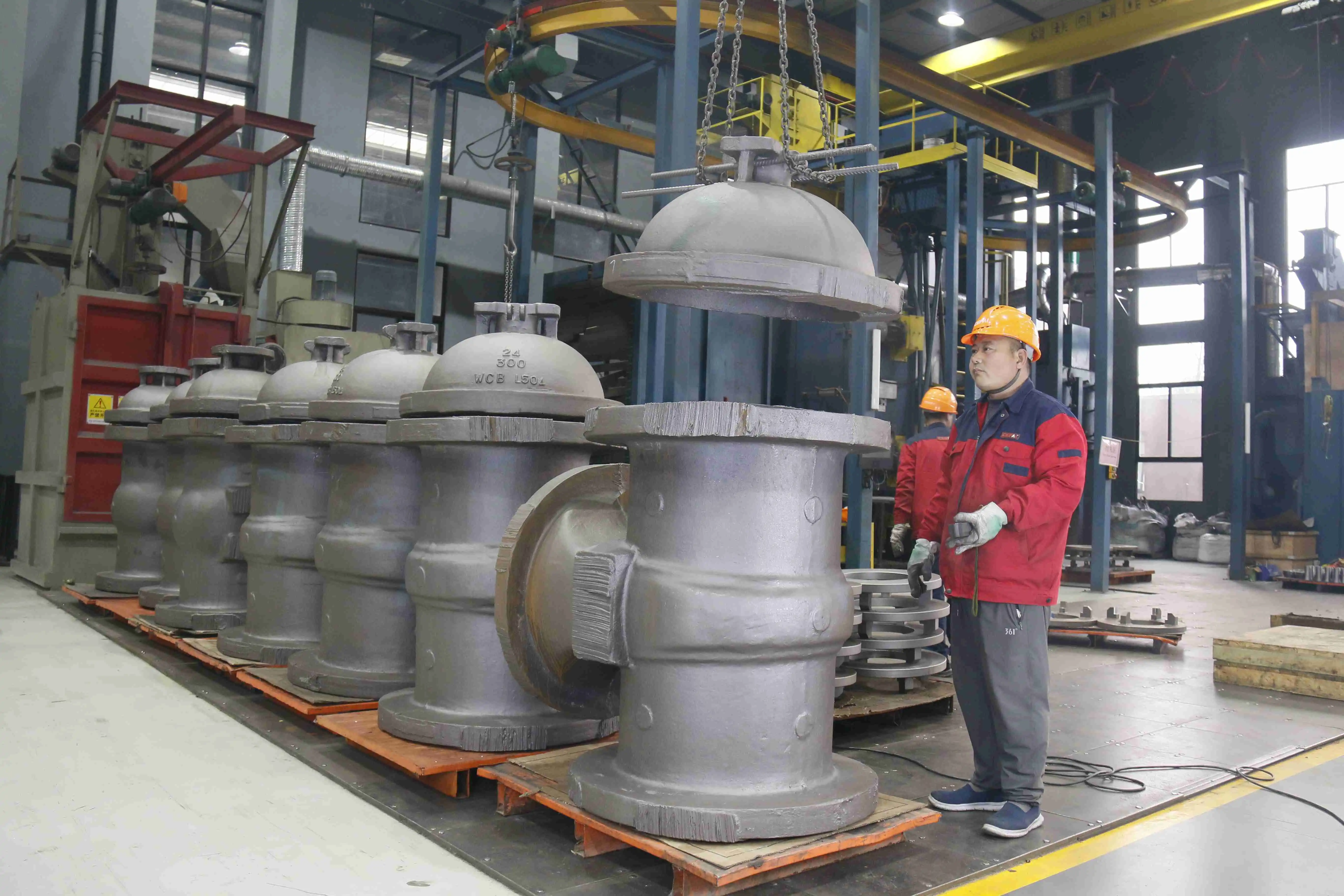
The hallmark of exceptional Pneumatic Control Valve performance lies in its ability to maintain precise flow control across extensive operating ranges. High-performance valves feature pressure-balanced spool designs that eliminate the effects of upstream and downstream pressure variations on flow characteristics. This technology enables superior rangeability, often exceeding 100:1, which allows operators to maintain accurate control from minimal flow rates to maximum capacity without compromising stability or creating hunting conditions that can damage downstream equipment. Equal percentage and linear flow characteristics provide engineers with flexibility to match valve behavior to specific process requirements. Equal percentage characteristics deliver consistent control sensitivity across the entire operating range, making them ideal for temperature control applications where small adjustments produce significant process changes. Linear characteristics provide proportional flow changes relative to stem position, offering intuitive control for applications requiring predictable flow responses.
Critical Material Selection and Construction Features
-
High-Grade Stainless Steel Components for Longevity
Material selection represents a fundamental aspect of high-performance Pneumatic Control Valve construction, directly impacting operational longevity, maintenance requirements, and total cost of ownership. Premium valves utilize grade 316 stainless steel or superior alloys for internal components, providing exceptional resistance to corrosion, erosion, and thermal stress. The valve body construction typically incorporates WCB, CF8, or CF8M materials, each offering specific advantages for different operating environments and media compatibility requirements. Internal components manufactured from 304 or 316 stainless steel with stellite surfacing provide enhanced wear resistance in high-velocity applications where erosion concerns exist. The combination of stainless steel base materials with stellite overlays creates a durable surface that maintains dimensional stability and sealing integrity throughout extended service intervals. Multi-series Pneumatic Low Temperature Control Valve applications particularly benefit from specialized materials that maintain mechanical properties at cryogenic temperatures, ensuring reliable operation in demanding low-temperature processes.
-
Advanced Sealing Technology and Leakage Prevention
Superior sealing performance distinguishes high-performance valves from conventional alternatives, with modern designs incorporating multiple sealing technologies to achieve exceptional tightness levels. Metal valve seats comply with ANSI B16.104 Level IV standards, while non-metallic valve seats achieve Class VI shutoff performance, virtually eliminating internal leakage that can compromise process efficiency and environmental compliance. Flexible graphite and PTFE packing systems provide reliable stem sealing across temperature extremes, maintaining integrity from -40°C to +200°C depending on specific material selection. The implementation of bolt-pressed gland designs enables field adjustment of packing compression without valve removal, reducing maintenance costs and minimizing system downtime.
Digital Integration and Smart Valve Technologies
-
Electronic Positioners and Feedback Systems
Modern high-performance Pneumatic Control Valve systems integrate sophisticated digital positioners that transform analog control signals into precise valve positioning. These intelligent devices feature auto-tuning capabilities that optimize valve response characteristics for specific applications, eliminating the need for manual calibration and ensuring consistent performance throughout the valve lifecycle. Digital positioners provide enhanced low-flow control capabilities, critical for applications requiring precise control at minimal flow rates. Valve position transmitters enable continuous monitoring of actual valve position, providing operators with real-time feedback for process optimization and predictive maintenance planning. These systems can detect developing issues such as stem binding, actuator degradation, or packing problems before they result in operational failures. The integration of limit switches and solenoid valve accessories enables remote operation and emergency shutdown capabilities essential for automated process control systems.
-
Remote Monitoring and Diagnostic Capabilities
Advanced diagnostic features built into high-performance Pneumatic Control Valve systems provide comprehensive insights into valve health and performance trends. These systems monitor parameters including valve travel, actuator pressure, response time, and internal leakage rates, enabling predictive maintenance strategies that maximize equipment availability while minimizing maintenance costs. Remote monitoring capabilities allow operators to assess valve performance from centralized control rooms, reducing the need for field inspections and enabling rapid response to developing issues. Multi-series Pneumatic Low Temperature Control Valve applications particularly benefit from remote monitoring in harsh environments where manual inspection presents safety risks or operational challenges.
Installation Flexibility and Maintenance Accessibility
-
Modular Design and Customization Options
High-performance Pneumatic Control Valve systems feature modular construction that accommodates diverse installation requirements and enables easy customization for specific applications. Flange connections conforming to international standards including ANSI 150, 300, and 600 classes provide compatibility with existing piping systems while ensuring proper alignment and stress distribution. Nominal diameter ranges from DN15 to DN400mm accommodate applications from small pilot systems to large process lines requiring substantial flow capacity. Extended valve covers designed for low-temperature applications ranging from -40°C to -196°C enable installation in challenging environments while maintaining operational accessibility. The straight cage-type design minimizes pressure losses while providing excellent flow capacity and control characteristics essential for efficient process operations.
-
Serviceability and Component Accessibility
Maintenance-friendly design features significantly impact total ownership costs and operational availability throughout the valve lifecycle. High-performance valves incorporate easily accessible components that enable rapid inspection, adjustment, and replacement without requiring specialized tools or extensive system disassembly. Removable cage assemblies allow internal component inspection and replacement while leaving the valve body installed in the pipeline, minimizing maintenance disruption and associated costs. Standardized component designs enable inventory consolidation while ensuring availability of replacement parts throughout the valve service life. The integration of position indicators, filter pressure reducing valves, and speed regulators as optional accessories provides comprehensive functionality while maintaining serviceability and component accessibility essential for efficient maintenance operations.
Quality Assurance and Industry Compliance

-
Rigorous Testing and Certification Standards
High-performance Pneumatic Control Valve manufacturing incorporates comprehensive quality assurance processes that ensure consistent performance and regulatory compliance. Valves undergo extensive material analysis, dimensional inspection, and performance testing according to international standards including API, ANSI, and ISO requirements. Each valve receives final testing before shipment, including pressure testing, leakage verification, and functional verification of all control components. Manufacturing facilities certified to ISO 9001 quality management standards implement systematic processes that ensure consistent product quality and traceability throughout the production cycle. Environmental management systems conforming to ISO 14001 standards demonstrate commitment to sustainable manufacturing practices while occupational health and safety systems meeting ISO 45001 requirements ensure worker safety and product reliability.
-
Third-Party Validation and Industry Recognition
Independent certification from recognized testing organizations provides additional assurance of product quality and performance capabilities. SIL (Safety Integrity Level) certifications for butterfly valves, ball valves, and control valves demonstrate compliance with functional safety standards essential for critical process applications. CE certification ensures conformity with European safety and performance requirements, enabling global market acceptance and regulatory compliance. CNAS (China National Accreditation Service for Conformity Assessment) laboratory recognition ensures testing capabilities meet international standards for accuracy and reliability. These certifications provide customers with confidence in product performance while meeting regulatory requirements for safety-critical applications across diverse industries including petrochemical, pharmaceutical, and power generation.
Conclusion
Selecting high-performance Pneumatic Control Valve systems requires careful evaluation of actuator technology, material construction, digital integration, installation flexibility, and quality assurance features. These five critical characteristics determine operational reliability, maintenance requirements, and total cost of ownership throughout the valve lifecycle.
Cooperate with CEPAI Group Co., LTD.
CEPAI Group Co., LTD. stands as China's leading China Pneumatic Control Valve manufacturer, combining advanced manufacturing capabilities with comprehensive technical expertise. Established in 2009 with 200 million yuan registered capital, our 56,000 square meter facility houses Asia-Pacific's longest high-precision intelligent manufacturing production line. As a national high-tech enterprise and specialized small giant company, we deliver High Quality Pneumatic Control Valve solutions backed by Jiangsu Provincial Technology Centers and CNAS-certified laboratories.
Our Multi-series Pneumatic Low Temperature Control Valve products serve critical applications across petrochemical, pharmaceutical, and power generation industries. With supplier qualifications for PetroChina, Sinopec, and CNOOC, we provide comprehensive pre-sales consultation, customized solutions, and after-sales support services. As your trusted China Pneumatic Control Valve supplier and wholesale partner, we offer competitive Pneumatic Control Valve price options with global shipping capabilities. Contact us at cepai@cepai.com for technical consultation and custom Pneumatic Control Valve for sale solutions.
FAQ
Q: What pressure ranges can high-performance pneumatic control valves handle?
A: High-performance pneumatic control valves typically handle nominal pressures from PN16 to PN64 (ANSI 150 to 600 classes), with actuator spring ranges from 20-240KPa depending on application requirements.
Q: How do you determine the correct valve size for a specific application?
A: Valve sizing requires calculating the required flow coefficient (Cv) based on flow rate, pressure drop, and fluid properties, then selecting the appropriate nominal diameter (DN15-400mm range) to achieve optimal performance.
Q: What maintenance intervals are recommended for pneumatic control valves?
A: Maintenance intervals depend on operating conditions, but typical schedules include quarterly inspections, annual actuator servicing, and packing replacement every 2-3 years under normal conditions.
Q: Can pneumatic control valves operate in extreme temperature environments?
A: Yes, specially designed valves with extended covers can operate from -196°C to +200°C, with appropriate material selection and sealing systems for specific temperature ranges.
References
1. "Control Valve Handbook" by Emerson Process Management, Fisher Controls International LLC
2. "Industrial Control Systems: Mathematical and Statistical Models and Techniques" by Adedeji B. Badiru and Oye Ibidapo-Obe
3. "Valve Selection Handbook: Engineering Fundamentals for Selecting the Right Valve Design for Every Industrial Flow Application" by Peter Smith
4. "Process Control Instrumentation Technology" by Curtis D. Johnson

Get professional pre-sales technical consultation and valve selection services, customized solution services.
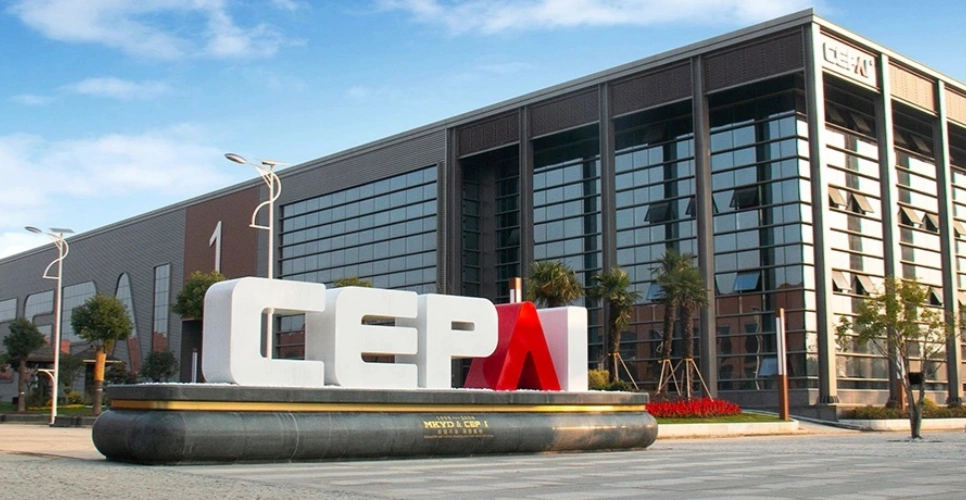
About CEPAI
